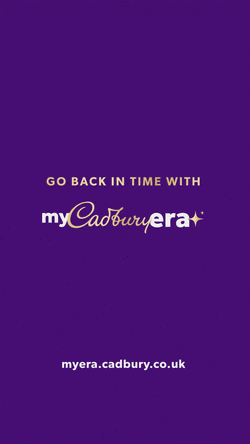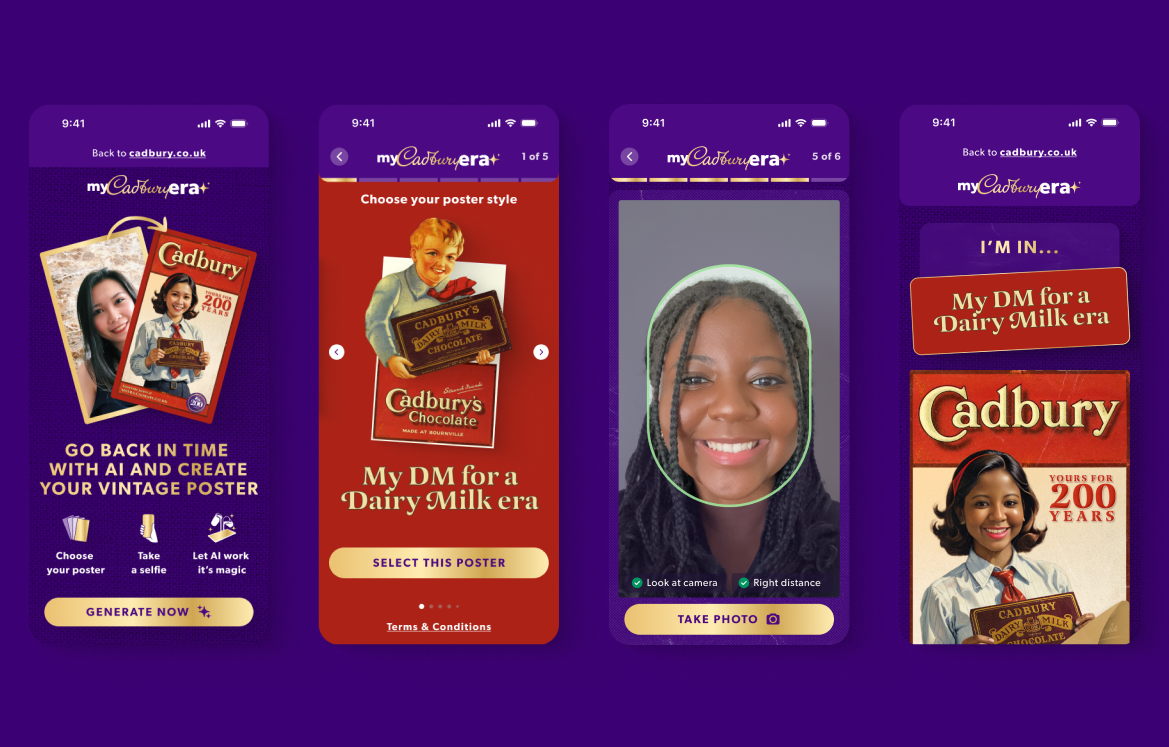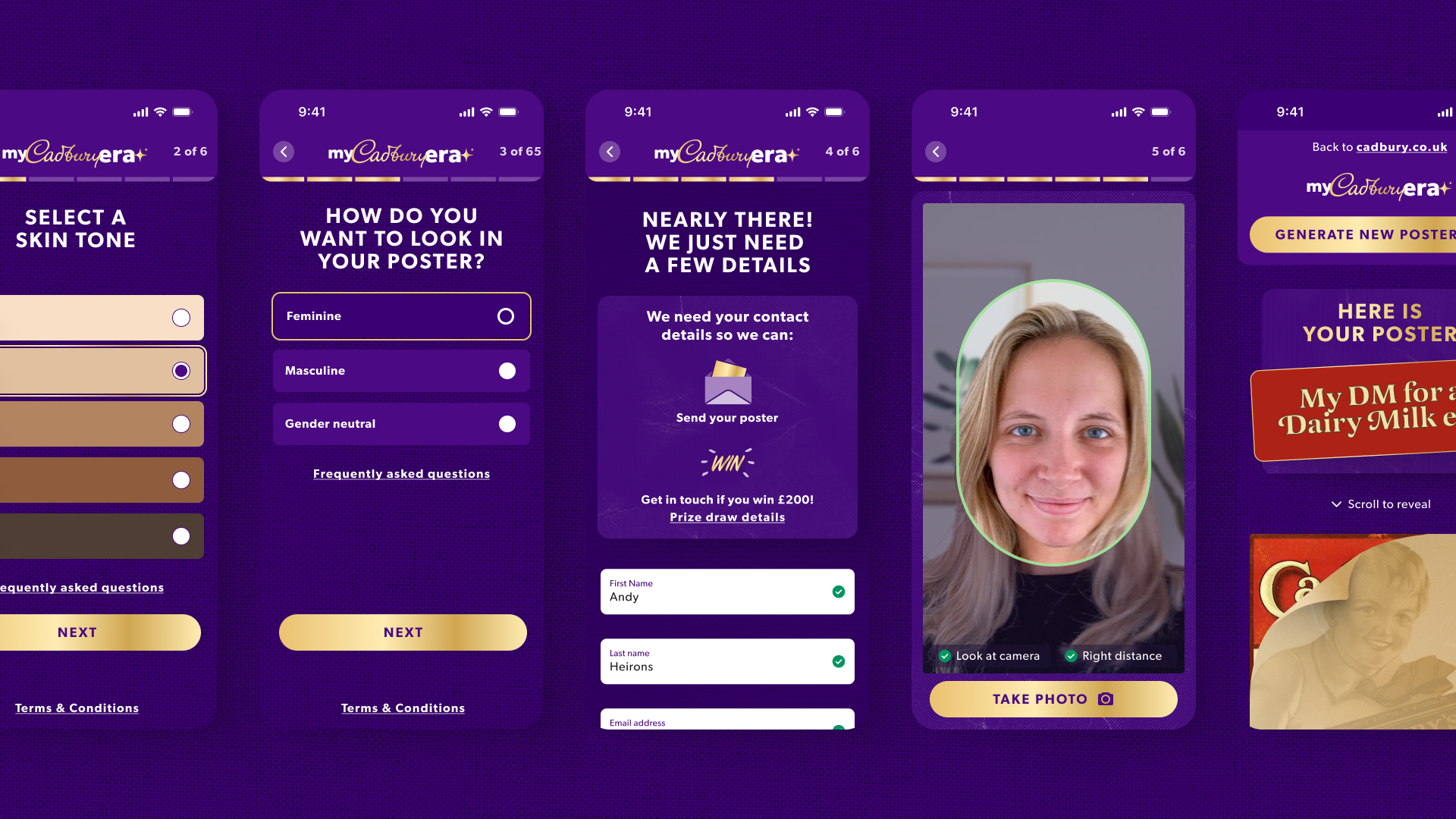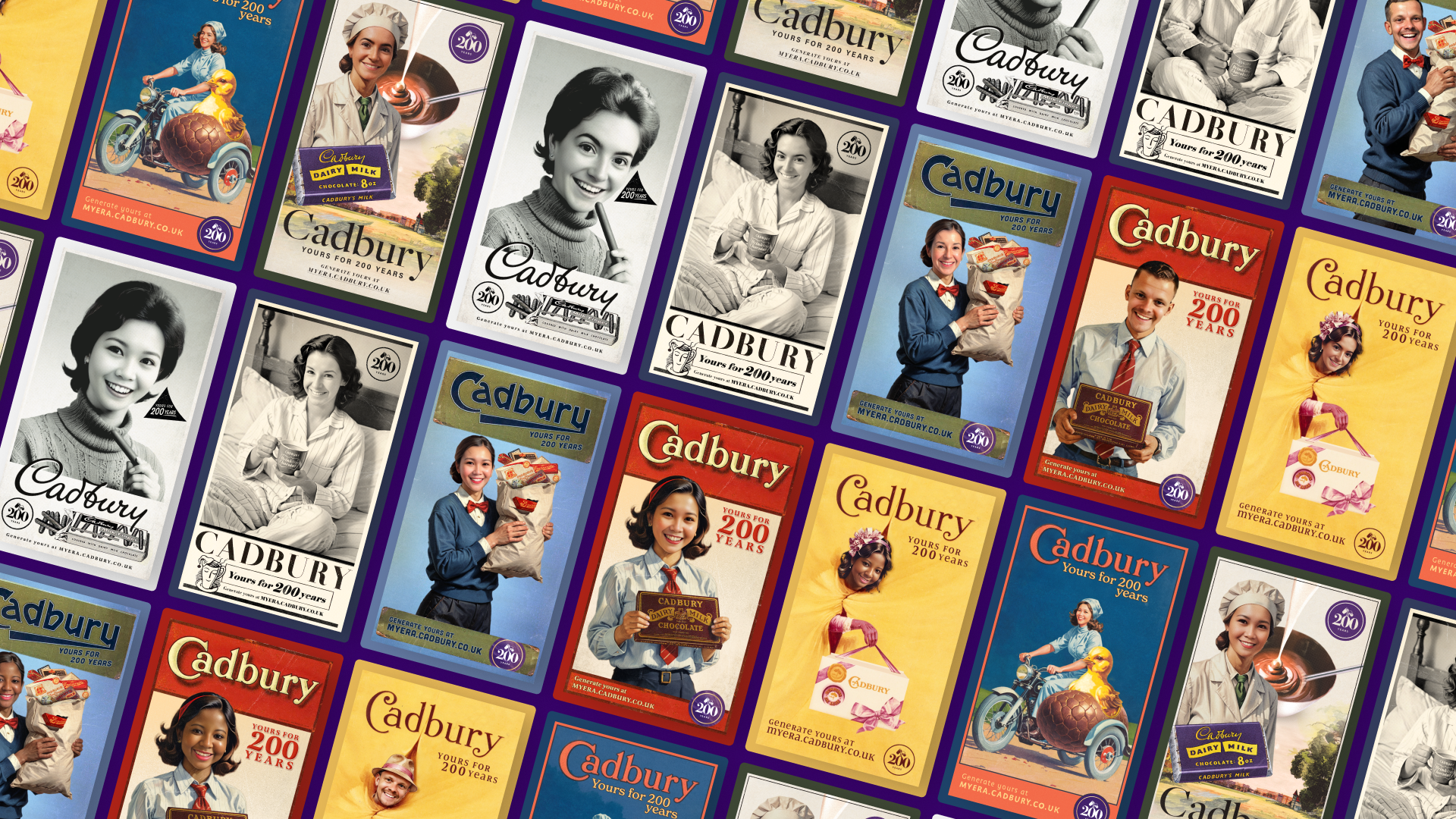
My Cadbury Era
Cadbury is among the most historic brands in the UK. Its chocolate has become part of the fabric of British life, from Easter eggs to treats for any occasion. It has become woven into our memories and our seasonal traditions.
My Cadbury Era is a Generative-AI powered experience to celebrate Cadbury’s 200th anniversary and its long-standing relationship with the British public, by placing the people in their own version of a vintage Cadbury poster.
To capitalise on this exciting milestone, we had the opportunity to push the boundaries of what has been done before and use AI and get fans of the brand, young and old, involved in a way that was never possible before.
Users uploaded a selfie and selected their ‘Era’ from one of seven classic Cadbury ads, along with options for how they wanted to be represented, and the tool then re-created the poster featuring their likeness. In keeping with Cadbury’s brand positioning of generosity, participants could see themselves in 1 of 7 iconic styles from Cadbury’s history and also automatically entered into a prize draw to win £200.
Occasionally there is a moment in time you get to take on a project that is so exciting and groundbreaking you can’t quite believe the client has gone for it. A project that allows you to take some risks and flex all your experience muscles. The creation of the My Cadbury Era tool pushed our collective experience both in technology and inclusive design to new levels.
HOW WE DID IT
At its heart My Cadbury Era allows users to upload a selfie and select their Era from one of seven classic Cadbury ads. This is not just a simple selfie upload though, the tool provides users with the options to determine how they would like to be represented – from skin tone, to gender – Gen-Ai is well reported to have creative challenges in this area due to the repository of information it draws from and trains itself with from the open web.
This was a technical and creative collaboration like no other. Gen-AI is unpredictable when left on its own to be “creative”. So it took a lot of creative and technical thinking, to train and prompt and manipulate old, not particularly diverse or inclusive posters, that in some instances were surreal or culturally dated. We had to get AI to understand the posters, DE&I generally, and integrate all this to be something everyone can use, and enjoy the output.
With the help of AI and other technology – the tool recreates a poster featuring a user’s likeness and essence of their features and brings it together with gen-ai prompt driven versions of the original characters in the vintage posters . This was a chance for us to bring the historic archives up to date and show the diversity of Britain. But this required a critical combination of people-powered human design and AI technology crossed over to become a collaboration – people and machines creating together. A project of this nature needs a careful blend of both to ensure the integrity, and sensibilities of the content as an output in today’s culture. And the experience needed to be enjoyable to everyone – accessible, open and transparent – as you would hope for users, given the significant positive change and D&I globally, and given this is from Cadbury – one of the UK’s best recognized and loved brands. A team of full time technologists, designers and DE&I specialists worked together with the Cadbury team every step of the way.
The selfie taking feature of the app was a bespoke build to ensure the best possible quality images for the poster generation. Some of the checks we put in place include ensuring the head is in the right position, the lighting is suitable and that all features can be seen and recognized, and the background influences that AI might pick up on, reduced.
Behind the scenes there was even more to consider. The inputs and training of the tool provided a broad user section representation and every iteration was tested on a selection of images as broad and inclusive as Cadbury customers. Users have to identify themselves with SMS authentication to be able to use the tool but data is not kept for marketing purposes.
For the end product we enforced 2 levels of moderations, automatic based on pre-defined criteria and manual through a moderation partner ensuring that every image created was thoroughly checked for security and integrity of the campaign and its participants.
HOW DID IT DO?
The campaign had great traction. With over 77,000 people creating their own posters and spending on average 2:25 minutes with the brand. The final significant moment for this project was the impact to the Mondelez business, not just us, on how to design and build with AI responsibly. And not just for the campaign or product sales – this wasn’t about that. The journey we went on with the client due to the legal issues, and ethical challenges not only informed but is now influencing how Mondelez considers AI and the reuse of it’s marketing archives for the future.
In summary this work shows that taking responsibility of AI like we’ve outlined is hopefully not only inspiring and inclusive but overcome the current pitfalls of AI. In turn it is setting the direction of a positive and bright future for a proper way to work with AI – a true collaboration between humans and machines to make wonderful experiences for people.


77,000
POSTERS CREATED
2:25
MINUTES AVERAGE ENGAGEMENT

